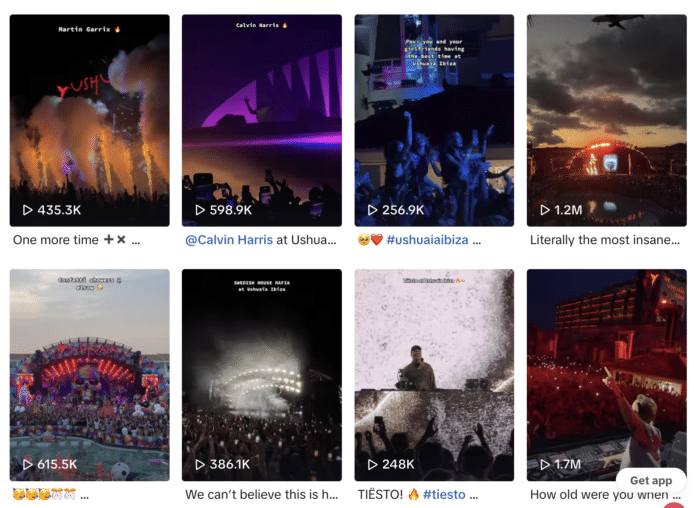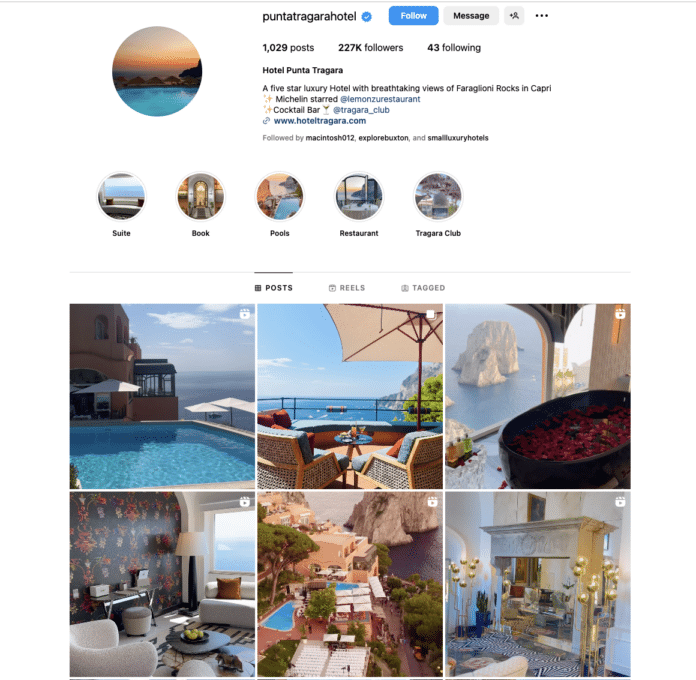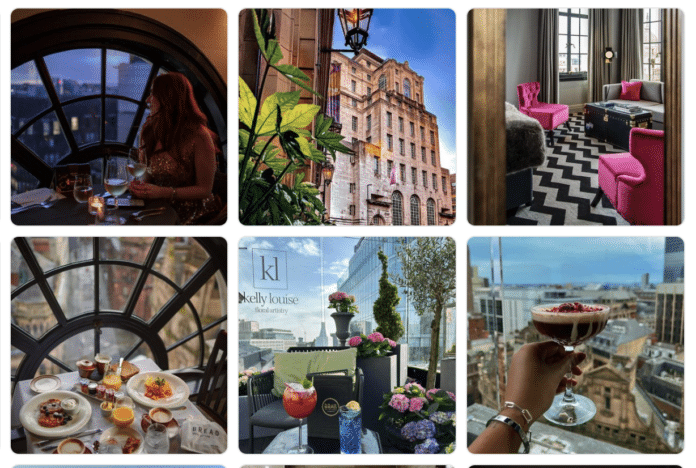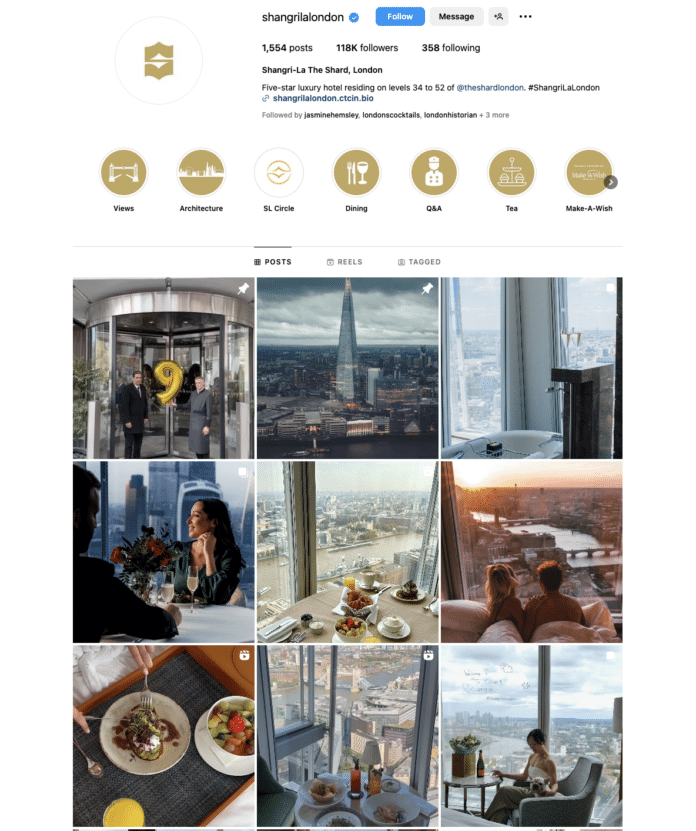Sendible insights How to Promote a Hotel Chain: Strategies for Brand Consistency and Scale
Promoting a single hotel takes careful social media marketing. Promoting a chain with dozens or hundreds of locations? That's even more complex, especially with multiple stakeholders, including managers and C-Suite leadership.
As a hotel CMO or VP of Marketing, you need to maintain a consistent brand while letting each property connect with its local market and attract customers.
This guide shows you exactly how to do it. Keeping your hotel brand strong while driving real results at every property.
Table of Contents
- Multi-location hotel challenge: Balancing brand consistency with local relevance
- Centralised content creation for scalable marketing
- Win local SEO for every property
- Streamlining social media management across dozens of locations
- Measuring success: Aggregating KPIs across the entire chain
- Promoting a hotel: Frequently asked questions (FAQs)
Multi-location hotel challenge: Balancing brand consistency with local relevance
Every hotel chain faces the same marketing and social media challenges.
How do you ensure every property follows your carefully-crafted core brand guidelines while still optimising for unique local attractions and offerings?
You can’t have local hotels looking like they’ve just put something together using Canva and posting it on Facebook like they’re hosting a bake sale. Every hotel in your group has got to promote itself consistently, while also maintaining a strong local presence, and that includes across every channel, and Google.

Social Media Management within the Hotel Industry
Why brand consistency matters for hotels
Guests expect the same experience everywhere. Every hotel is competing with every hotel in their local area, and other regions (if travelers are looking at multiple holiday destinations), and alternate options, like Airbnb.
Whether guests are booking in New York or New Orleans, they want the same quality and service your brand promises. A guest who loves your flagship property should feel confident booking any of your locations.
This consistency builds trust and recognition. It's what makes your chain valuable; guests know what to expect.
Why local relevance is equally important
Travelers, whether on business or leisure, are hyper-local in their decisions. Someone searching for a hotel in Austin, TX, doesn't just want to know about your chain's amenities. They want specific information:
- What's within walking distance
- What local events are happening
- What restaurants are nearby
- How your property fits into the city's unique culture
The same guest booking in Denver, CO, wants Denver-specific details, not generic messaging that looks like it was written by someone who’s never seen the Rocky Mountains.
This messaging has got to be consistent across every social media channel, from Instagram to TikTok, and third-party booking platforms.
Hotels’ core social media challenge
This is the fundamental tension: standardization versus localisation. Without the right approach, you'll end up with one of two problems:
- All properties become identical clones: Perfectly on-brand but irrelevant to local markets, and not standing out against better-tailored local hotel brands.
- Each property operates independently: Creative but inconsistent, fragmenting your brand and wasting marketing efforts.
Neither scenario maximises your chain's potential or revenue. And ultimately, that’s the goal behind every single hotel social media post: Shift room inventory!
Plus, if you’ve got an on-site restaurant, maxamise food and beverage (F&B) revenue, too.
The social media solution for hotels
To solve those problems, you need three foundational solutions:
- Centralised content infrastructure: A single source of truth for brand assets and messaging. Very helpful when working with external agencies, freelancers, influencers, and multiple hotels in a group.
- Strict governance systems: Clear guidelines that everyone follows
- Decentralized execution authority: Local teams have the tools and freedom to respond quickly to their market
This balance lets corporate maintain editorial control and brand safety while property managers can capitalize on local opportunities and engage with guests effectively.
Want to grow your hotel's or hotel chains' social followers, customers, and bookings across all locations? Sign-up to Sendible: From scheduling to reporting — manage everything in one place, build engagement, and shift room booking inventory.

TravelClick helps their clients scale their businesses and maximise revenue
Centralised content creation for scalable marketing
The foundation of successful hotel chain marketing is a centralized system that scales across all your properties while maintaining quality and consistency.
A shared content library and brand guidelines
Create a central repository that serves as your single source of truth for all brand assets, approved messaging, and visual standards. This shared library should include:
Visual Assets:
- High-quality photos of common areas (lobbies, hallways, standard room types, and any rooms that are more luxurious)
- Approved lifestyle imagery
- Brand logos and color palettes
- Photography style guidelines
Messaging Resources:
- Approved copy templates
- Messaging frameworks for different guest segments (business travelers, families, couples, luxury seekers, etc.)
- Response templates for common guest questions
Property-Specific Content: Each property's unique photography, like their specific rooms, local amenities, and property-specific features, gets added to this library but must undergo approval before deployment.
This ensures your Park City (Utah) property can showcase ski-season visuals and your Miami property can feature beach content, while both maintain consistent visual language, lighting quality, and compositional style.
Clear Brand Guidelines: Your guidelines must be explicit and detailed:
- Define your tone of voice clearly (sophisticated and formal, or approachable and playful?)
- Specify which social platforms receive which content types
- Document messaging hierarchies: what messages take priority during different seasons, how to frame promotions, and how to address local events
- Using local events needs to be flexible: Enough leeway so that hotels can be creative, but not too creative.
Templated Copy Blocks: Create flexible templates for the following scenarios, while also accounting for others you might need:
- Seasonal campaigns
- Last-minute deals
- Local partnership announcements
- Common guest questions
These templates should allow local customization (a "Weekend Escape" template might say "Escape to [City Name] this weekend" rather than a fixed location) while maintaining voice and messaging consistency.
Centralised Access: Store this library in a platform accessible to all property teams, like Box, Dropbox, or Google Drive.
Sendible's content library feature allows marketing teams to organise approved assets, standardize messaging, and ensure every property manager has access to on-brand materials without requiring approval for every basic post.
Standardising high-performing content across the chain
Rather than making each property develop content from scratch, create universal campaign frameworks that deploy across all locations with local customisation layered on top.
Universal campaign framework example: “seasonal escape”
The corporate team develops:
- Core messaging
- Visual templates
- Promotional mechanics
- Launch timeline
Each property then localises it:
- Denver property: Rocky Mountain scenery and ski proximity
- San Diego property: Beach access and perfect weather
- New York property: Urban attractions and Broadway proximity
The framework stays consistent. Giving your chain the same visual style, same promotional period, same offer structure, but the execution feels locally relevant.
Benefits of This Approach:
- Concentrates creative effort at the corporate level
- Ensures visual consistency across the chain
- Makes scaling easy
- Allows rapid deployment without requiring independent creative work at each location
Recurring Content Series:
Develop content series that work across the entire chain:
- "Wellness Wednesday": Posts about spa, fitness, or healthy dining options work for every property, but use property-specific photography and local wellness resources
- "Foodie Friday": Features hotel restaurants or local dining recommendations with location-specific content
These series maintain consistent branding and posting cadence while allowing hyper-local content that resonates with each property's audience.
Implementation: Document these campaign frameworks, assign clear timelines, and provide property teams with templated assets and customisation guidelines. The result is a marketing calendar that feels coordinated and on-brand while remaining relevant to each local market.

How to Win at Social Media Marketing for Hotels: The Multi-Location Pillar Guide
Win local SEO for every property
Local search visibility directly impacts your ability to drive direct bookings. Each property needs optimization for its specific geographic market while maintaining your chain's overall search authority.
Implementing an Enterprise Google Business Profile Strategy
For hotel chains, Google Business Profiles (GBP) are in many ways your most valuable digital real estate, especially for Local SEO. They directly influence:
- Local search visibility
- Map placement
- Customer perception
- Direct booking capability
The Challenge of Scale: Managing GBP for potentially hundreds of properties requires systematic processes. The core challenge is maintaining Name, Address, Phone (NAP) consistency across all listings while ensuring each property's unique information and imagery are complete and current.
Top-Level GBP Audit: Create a comprehensive SEO and AI-based audit across all properties:
- Identify naming convention inconsistencies (Is it "Luxury Hotel Downtown Denver" or "Luxury Hotel - Denver Downtown"?)
- Standardize business categories
- Ensure all phone numbers and addresses match your booking system
Quarterly Maintenance Schedule: Google frequently removes duplicate listings or consolidates variations, so regular audits prevent visibility issues.
Create a standard checklist for every property manager:
- Verify business hours
- Check address accuracy
- Confirm phone number
- Review and update business category
- Audit all photos for quality and brand compliance
Review Response Strategy: Rather than having a central team respond to every review at every property, give local managers authority to respond to GBP reviews using provided templates and guidelines. This ensures:
- Faster response times (guests expect replies within 24-48 hours)
- Consistent brand voice across all responses
- Local context in responses
Regular GBP Posting: Schedule regular posts to your GBP listings:
- Photos of anything new
- Seasonal highlights
- Special events
- Promotional offers.
Google's algorithm favors active, recently updated listings.
Use a centralised social media tool like Sendible that can schedule posts simultaneously across multiple GBP listings, saving time while maintaining consistency.
Hyper-local keyword optimisation for landing pages
Each property should have a dedicated landing page optimized for location-specific search intent. A guest searching "luxury hotel near Denver airport with spa" is looking for something from someone searching "mountain resort near Denver."
Given the importance of AI in search results, you probably need to do an AI-based audit too. See if your hotel is appearing in AI tools, Google’s AI Overview (AIO), and AI Mode.
If not, then this is something you’ll need to work with, either with your current SEO agency, or one that can solve this problem.
Landing Page Template Structure: Work with your web development team or agency to create templates that maintain consistent structure and design while allowing local customisation:
- Location-specific keywords
- Local attraction information
- Property-specific amenities
- Links to local dining and entertainment
- Property photos
- Local testimonials and reviews
Again, make sure you’re able to do this for AI in search and across multiple GBP listings.
Hyper-Local Keyword Strategy: Optimise each landing page using location-specific modifiers:
- "[Hotel Name] near [Local Landmark]"
- "[Hotel Name] in [Neighborhood]"
- "Hotels near [Airport]"
- "[Hotel Name] + [Local Event]" (e.g., "Denver Hotel near Coors Field")
- "[Hotel Name] close to [Popular Restaurant]"
Local Backlink Building: Partner with local sources to create backlinks to your property landing pages:
- Local bloggers and travel websites
- Chamber of commerce listings
- Local business directories
- Tourism boards
These local signals strengthen your relevance for location-specific searches and improve overall search rankings.
Schema Markup: Ensure your location pages include schema markup that explicitly defines:
- Hotel location
- Contact information
- Amenities
- Availability
This structured data helps search engines understand your property's local context and can lead to enhanced search appearance with rich and AI-based results.
Want to grow your hotel's or hotel chains social followers, customers, and bookings across all locations? Sign up to Sendible: From scheduling to reporting — manage everything in one place, build engagement, and shift room booking inventory.
Streamlining social media management across dozens of locations
Managing social media at scale requires balancing corporate control with local agility. The right systems make this possible without overwhelming your team.
Centralised approval workflows for localised content
Managing social media for dozens of hotel properties would be impossible without structured approval workflows. Local teams need autonomy to respond quickly to local opportunities, but corporate needs to maintain editorial control and ensure brand safety.
Tiered Approval System: Implement a system where different content types require different levels of approval:
No Approval Required:
- Day-to-day content: responses to guest comments
- Sharing local events
- Answering common questions
- Routine engagement
Corporate Approval Required:
- Promotional campaigns
- Messaging about policy changes
- Posts about the company or chain
- Content mentioning pricing or specific offers
Platform-Based Solution: Use a platform like Sendible that enables role-based access controls:
- Corporate team members set approval requirements for specific content types
- Local property managers draft content and submit for approval without separate tools or manual email workflows
- The system tracks what's approved, what's pending, and what's been published
- Creates accountability and transparency
Templated Approval Requests: Rather than submitting free-form posts for approval, use templates that prompt local managers to:
- Categorise their content
- Specify the target audience
- Explain the local relevance
- Justify why this content is being posted
This discipline ensures approvers have context and can make decisions faster.
Clear Approval SLAs: Establish that corporate will approve or request revisions on submitted content within 24 hours. This prevents local teams from missing time-sensitive opportunities (a flash sale needs to post today, not next week) while maintaining brand control.
Monitoring and engaging with local guest conversations
Running dozens of social media accounts means hundreds or thousands of guest conversations happening simultaneously across different time zones and platforms. Without a system for monitoring and delegating response authority, critical opportunities and serious problems could easily slip through the cracks.
Social Listening Implementation: Use social listening tools to track mentions of your brand and all property names across all social platforms. This monitoring should flag:
- Direct comments on your official accounts
- Tags and mentions of your properties
- Broader conversations about your chain are happening organically
A guest might tag a property in a post without the property team seeing it. Your social listening tool should catch that.
Triage System: Create clear guidelines for conversation routing:
Corporate Response Required:
- Brand-level issues
- Crisis situations
- Major PR opportunities
- Policy questions
Local Team Response:
- Routine guest questions
- Local engagement
- Property-specific inquiries
- Day-to-day interactions
Response Tools for Local Managers: Provide resources that enable quick, on-brand responses:
- Response templates for common questions
- Approval workflows for policy-related responses
- Direct escalation paths for issues needing corporate involvement
- Brand voice guidelines
Unified Inbox Functionality: Use platforms like Sendible that consolidate messages from all properties into a single dashboard, known as the Priority Inbox. This allows:
- Corporate team members to spot patterns (e.g., multiple guests suddenly asking about Wi-Fi issues signals a systemic problem)
- Individual messages are routed to the appropriate local manager
- Complete visibility into all customer conversations
- Faster response times across the entire chain
Measuring success: Aggregating KPIs across the entire chain
Most hotel chains measure social media success one property at a time, and this means missing the strategic insights that emerge at the chain level.
A better approach is to develop a unified reporting framework that aggregates KPIs across all locations while allowing drill-down capability into individual property performance. Here are the most useful metrics to track across an entire chain:
- Aggregate Direct Booking Rate:
- Track the percentage of bookings coming directly through your website versus OTAs
- Compare performance across properties to identify best practices
- Calculate the overall impact of your social media and content marketing on direct bookings
- Chain-Wide Review Score:
- Aggregate review scores across all properties from Google, TripAdvisor, and booking platforms
- Identify properties needing reputation management support
- Track improvement trends over time
- Cross-Property Engagement Rate:
- Total engagement (e.g., likes, comments, shares, saves, etc.) across all social media accounts
- Engagement rate by content type to identify what resonates chain-wide
- Property-by-property comparison to find high performers and those needing support
- Campaign Performance Metrics:
- How universal campaigns perform across different markets
- Which property customisations drive the best results
- ROI on coordinated promotional efforts
- Response Time and Customer Service:
- Average response time to guest inquiries across all properties
- Resolution rates for customer issues
- Sentiment analysis of guest interactions
- Content Efficiency Metrics:
- How often are approved templates and frameworks used
- Time saved through centralized content creation
- Approval workflow efficiency (average time to approval)
- Unified Platform Benefits: A platform like Sendible provides:
- Single dashboard view of all property performance
- Customisable reports that roll up chain-wide data
- Ability to drill down into individual property metrics
- Automated reporting that saves time
- Clear visibility into ROI across your entire portfolio
This unified reporting helps leadership prove marketing effectiveness, allocate resources efficiently, and identify opportunities for improvement across the chain.
Want to grow your hotel's or hotel chains' social followers, customers, and bookings across all locations? Sign up to Sendible: From scheduling to reporting — manage everything in one place, build engagement, and shift room booking inventory.
Promoting a hotel: Frequently asked questions (FAQs)
What is the biggest challenge for hotel chain marketing?
The biggest challenge for hotel chain social media marketing is balancing brand consistency with local relevance. Hotel chains must maintain a cohesive brand identity that builds guest trust and recognition across all locations.
At the same time, CMOs needs to ensure that each property to optimised for its unique local market, attractions, and search behaviors.
Without proper systems in place, chains either become indistinguishable copycats that fail to connect with local audiences, or they operate independently.
If every hotel does whatever it can or wants, this creates brand inconsistency and wastes marketing resources. It also potentially confuses customers and dilutes rather than strengthens your brand.
How do we ensure brand voice consistency across all locations?
Brand voice consistency is ensured through three key ingredients:
- Centralised content libraries: Create a single repository of approved visual assets, messaging templates, and brand guidelines that all property teams can access. This ensures everyone works from the same on-brand materials. You can use this whether working 100% in-house, with agencies, freelancers, or influencers.
- Strict approval workflows: Implement tiered approval systems where day-to-day content can be managed locally, giving individual managers autonomy. However, make sure that significant campaigns, offers, and discounts, or policy-related posts require corporate approval before publishing. Platforms like Sendible enable role-based access controls that automate this process.
- Clear brand guidelines: Document your tone of voice (ToV), visual standards, messaging hierarchies, and platform-specific content strategies explicitly. Provide templated responses and copy blocks that maintain consistency while allowing necessary local customization.
Check out our library of templates, audits, and guidelines to get your hotel brand started.
Combined, these three elements work together to maintain brand safety and consistency at scale while still enabling local teams to move quickly.
What is the best way to handle local property social accounts?
The best approach to handling local property social accounts combines centralised control with local autonomy:
Make the following local:
- Content calendar planning and campaign frameworks
- Approval workflows for significant content (promotions, any policy changes, pricing)
- Brand guidelines and approved asset libraries
- Performance monitoring and reporting
- Strategic direction and messaging priorities
Keep the following in a central team:
- Day-to-day guest engagement and responses
- Local event sharing and community interaction
- Property-specific content customisation
- Review responses (using provided templates)
- Real-time social listening and immediate replies
Use a unified platform like Sendible that allows corporate teams to maintain oversight while local managers access their own calendars, draft content, submit for approval when needed, and handle daily engagement independently.
This approach provides the best of both worlds: brand consistency and safety with local relevance and quick response times.
Freya Laskowski
Freya is an SEO consultant that helps brands scale their organic traffic with content creation and distribution. She is a quoted contributor in several online publications, including Business Insider, Fox Business, Yahoo Finance, and the Huffington Post. She also owns CollectingCents- a personal finance blog that she grew from the ground up.
You can reach out to her at freya@collectingcents.com
Text copied!







